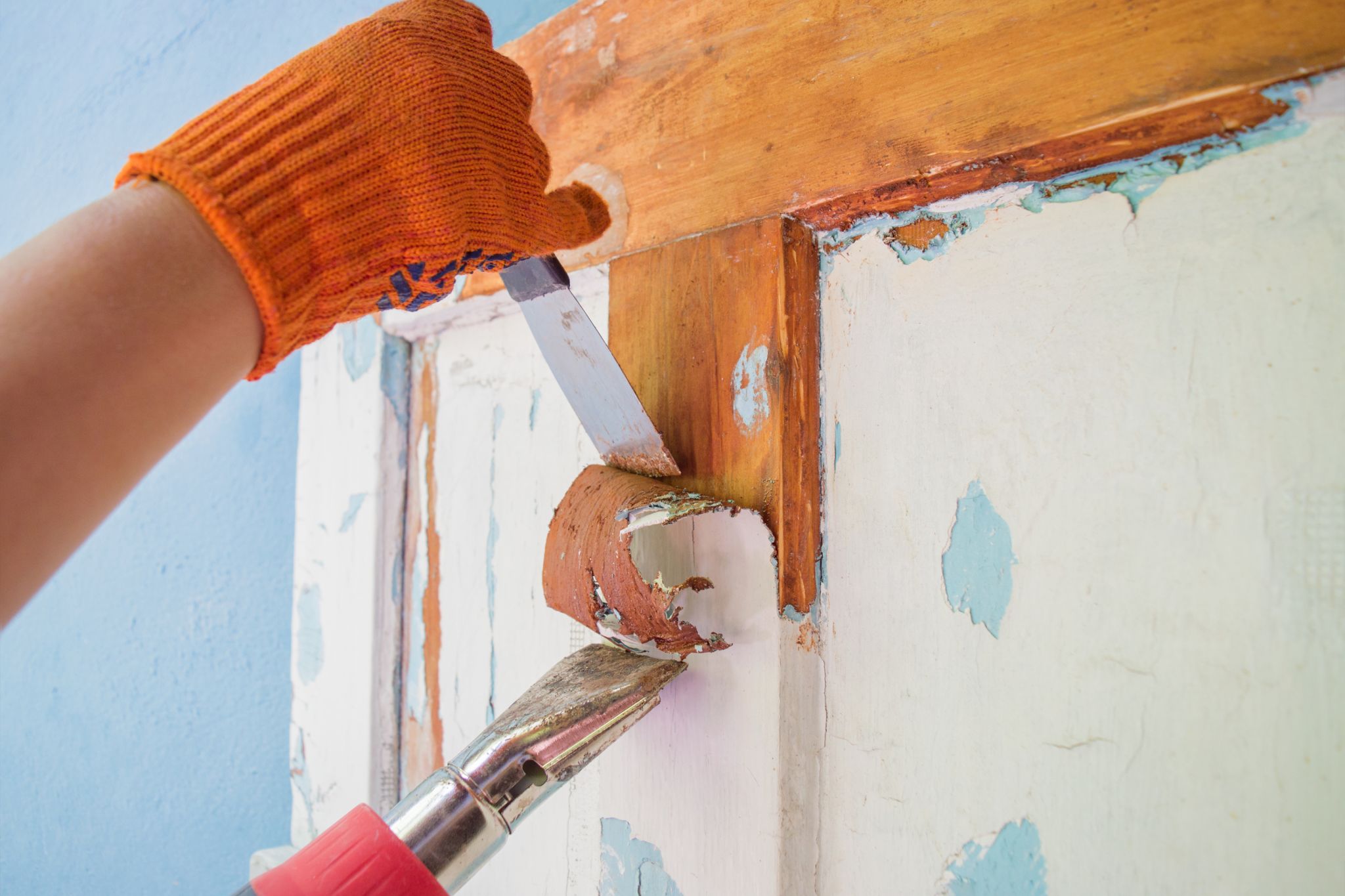Paint removal can be tricky, particularly in older homes, on ornate fixtures with many layers built up over the years, or in hard-to-reach spaces. Despite the potential challenges, a fresh coat of paint could make you happier, according to the National Association of REALTORS® 2022 Remodeling Impact Report Whether the project involved repainting just one room or the entire home interior, homeowners reported a joy score of 10 out of 10.
Regardless of the type of paint, where it has been applied, or the materials the paint is applied to, there's usually a way to get good results. Learn more about paint removal, ways to simplify the process, and situations when it’s best to call in the pros.
When to Remove Paint
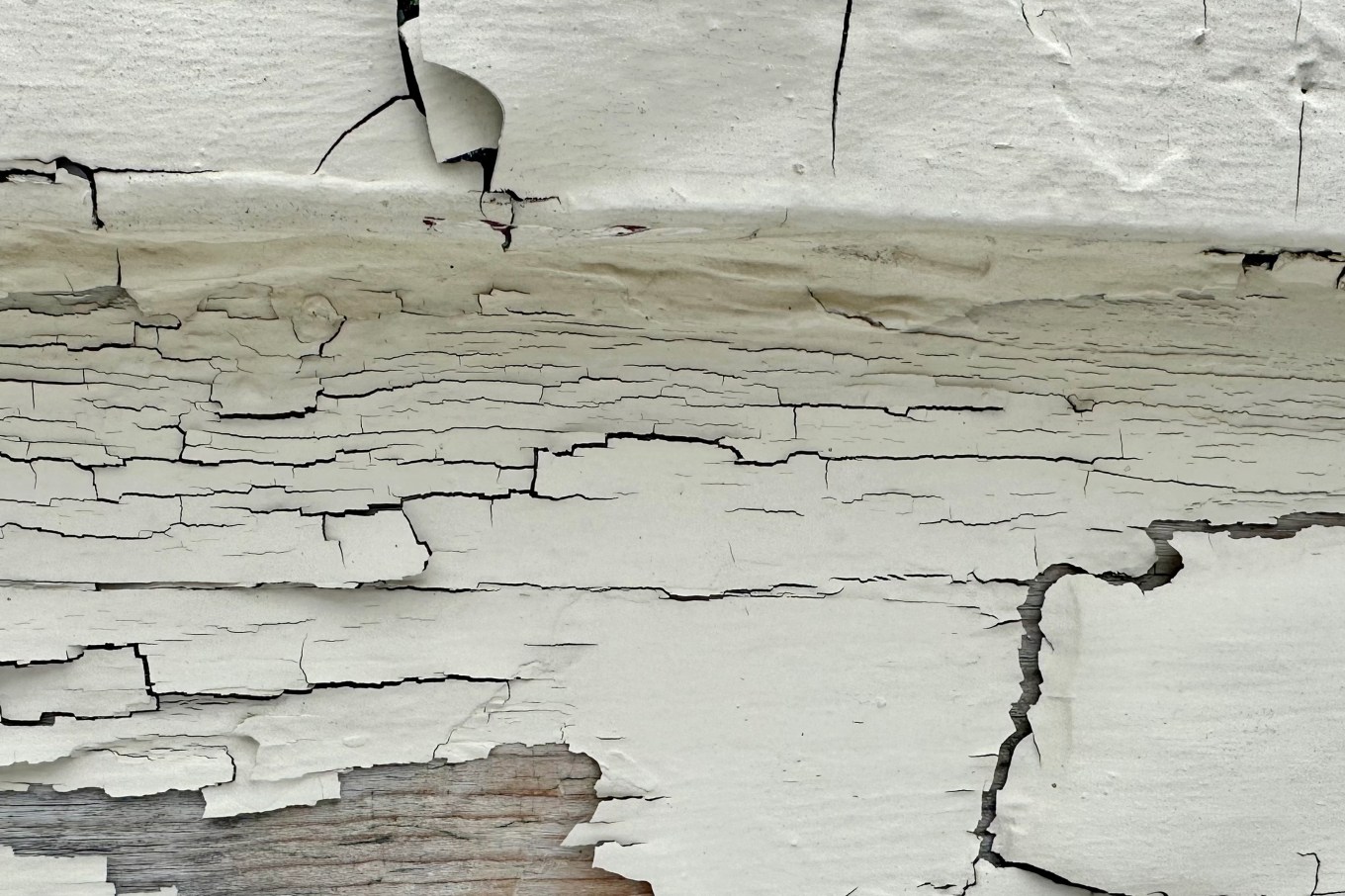
If you’re looking for a perfect finish in your home, removing paint before you reapply a new layer will usually produce the best results. To remove paint from surfaces with chipped, peeling, bubbling, or water-damaged paint, you’ll need to clean them. Chipped and peeling paint often means the paint is old. However, bubbling or water-damaged paint may result from dampness. Removing water-damaged paint should be your first step in investigating whether you’ll need to deal with a more severe problem, like mold or a leak.
Removing paint isn’t always the best option. For example, you can often repaint a well-maintained plaster wall without removing existing paint. However, if paint needs to be removed, you should understand the surface and the type of paint in question so you can take the most effective approach.
Lead Paint Removal
You’ll need to be especially careful if you’re removing lead-based paint, which is toxic when inhaled. Today, lead paint is banned in the U.S. because of its high toxicity. However, some items may contain lead paint, particularly in older houses built before 1940 and as late as 1978. An easy-to-use lead paint testing kit can help you identify lead paint in your home.
Since exposure to lead paint poses serious health risks, removing it can be tricky for an amateur. It’s best to hire a professional for the job.
Cost of Removing Paint
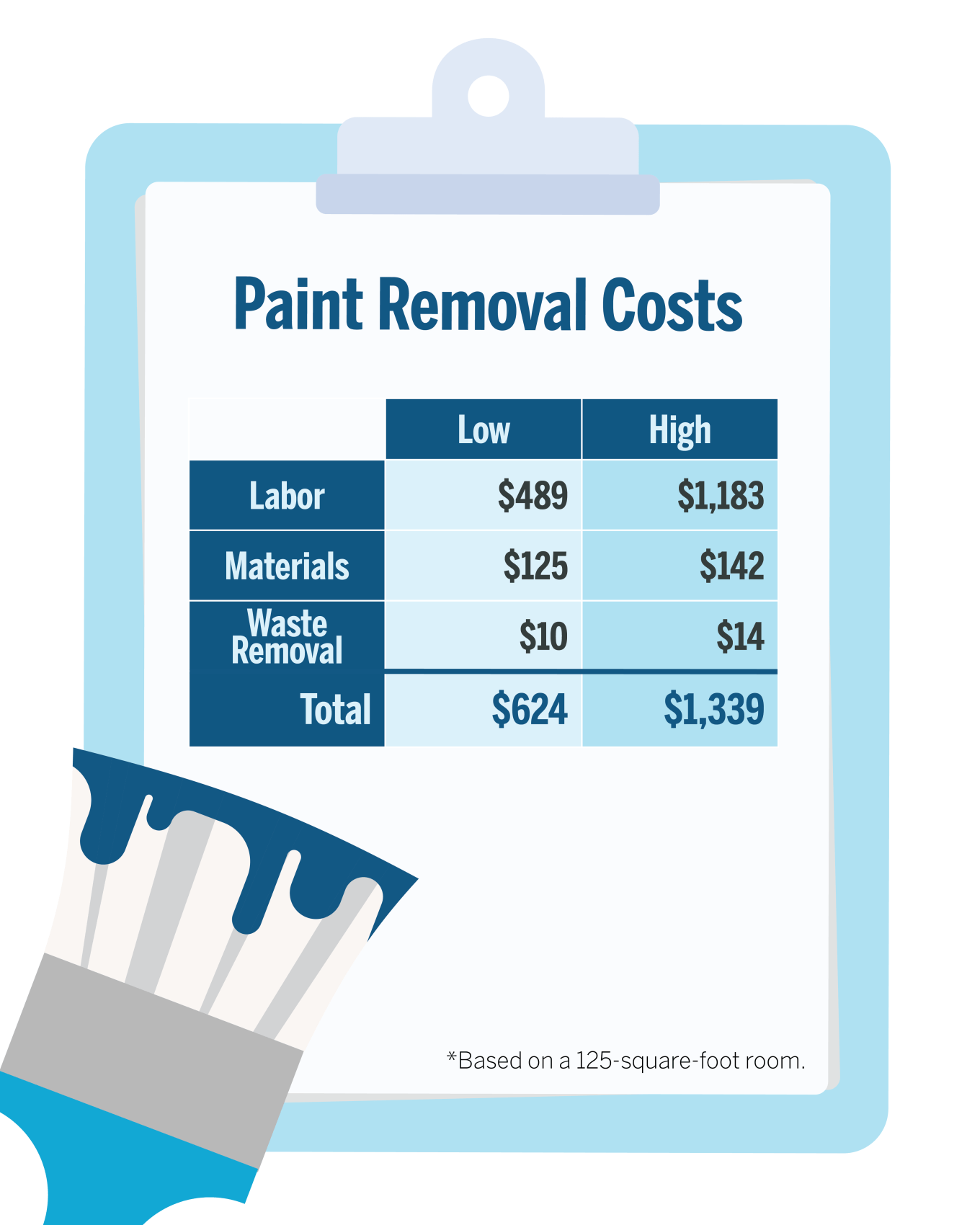
Since there are many different types of paints, substrates, and materials, paint removal costs can vary dramatically. However, expect to pay $5 to $11 per square foot for paint removal. For example, a 125-square-foot room may cost $489 to $1,183 in labor, $125 to $142 in materials, and $10 to $14 for waste removal.
How to Remove Paint
Most paint removal techniques are simple when you’re dealing with small surface areas. In some cases, such as when dealing with chemical paint removal or large areas of paint removal, it's best to turn to a professional.
Additionally, remember that you’ll encounter many different types of paint depending on the substrate or item the paint is adhered to. Learning about these different types will help you decide the best removal method.
Let’s look at how to remove paint from some common household materials.
How to Remove Paint from Walls
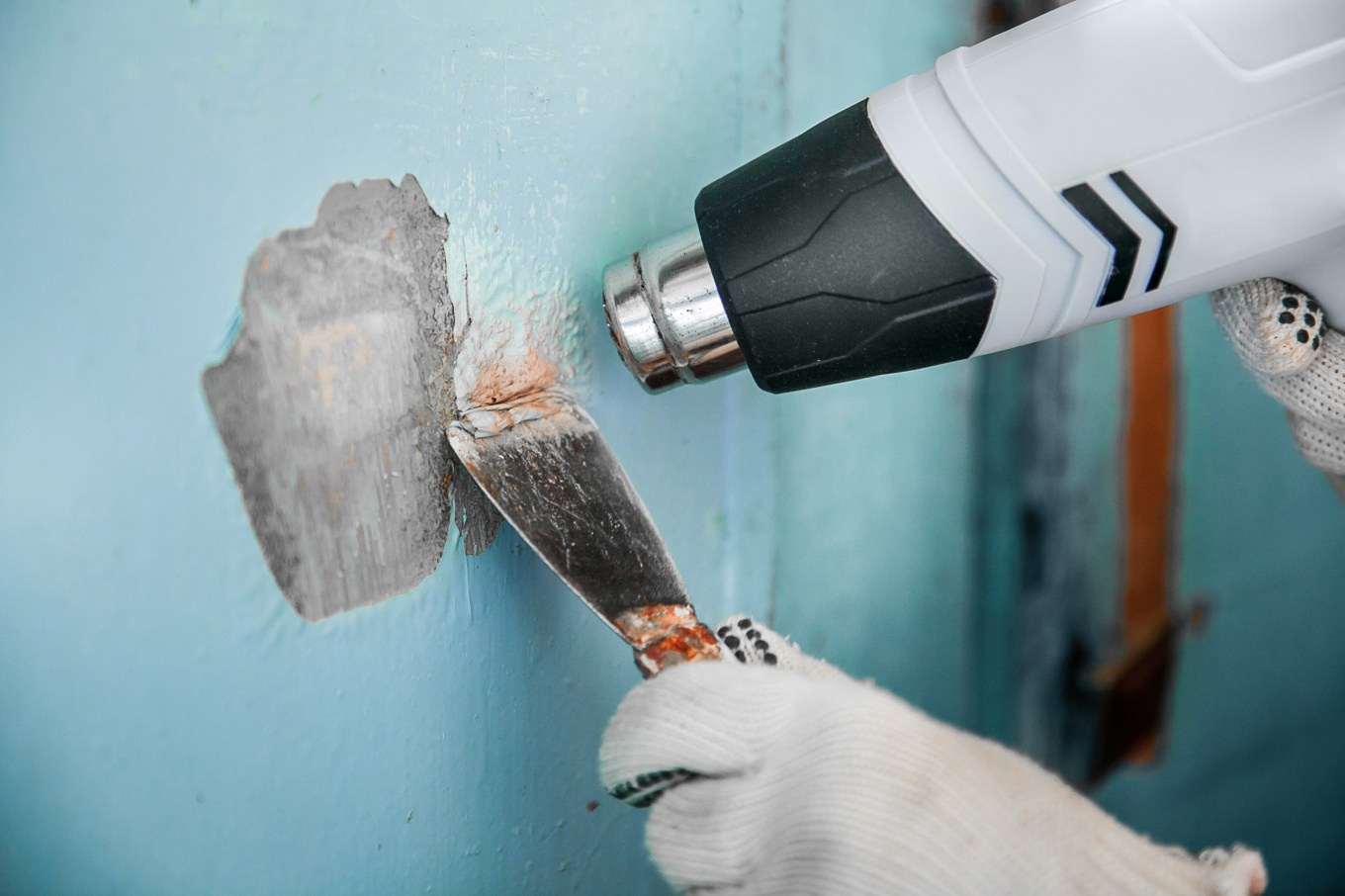
Most walls are finished with plaster, and paint is added on top. If the plaster is in poor condition, you may want to replace it and avoid the paint removal process entirely. If the plaster is in good shape, but the paint is peeling, you can use a heat gun and scraper to remove the paint. You can remove any stubborn areas with an electric sander or chemical removers.
How to Remove Paint from Wood
Latex paint is the most popular choice for wood. An electric sander is often the best way to remove any paint from a wooden surface. You'll probably first need to sand off any varnish used to protect the finish. Once you’re through with this step, you’ll start seeing the original wood grain creep through.
In addition, you might try chemical paint removers. Take care when using these products to prevent damage to the wood and harm to yourself. Wearing personal protective equipment (PPE), safety goggles, and a mask is essential. Heavy work gloves help too.
How to Remove Paint from Concrete
Removing paint from concrete can be tricky because the surface is rarely uniform. An effective approach is to use a power washer, particularly if the paint is already flaking away from the surface. The power washer can create enough pressure to blast away the paint, and you can loosen any particularly stubborn areas with a wire brush or chemical paint removers.
How to Remove Paint from Brick
Painting brick is a problematic practice that could damage your home. However, if you have painted brick and want to restore it to its former glory, prepare to spend some time and effort. Power washing is the way to go. Sandblasting is also an option, but if you use these methods, you’ll likely need to repoint the mortar and possibly replace badly damaged bricks.
How to Remove Paint from Metal
Removing paint from metal can be difficult. Many paints applied to metal items are designed to be highly durable, because the items are often in exterior settings. The items may be powder coated, with a thick finish that resists chipping, scratching, fading, and other damage.
Removing this type of metal paint will require a metal paint remover or chemical bath, something that only a professional should do. These commercial paint strippers may contain caustics, acids, or solvents and require specialist equipment and PPE to remove the paint safely.
Other types of metal paint found on fences or garage doors, or in different areas of the home can usually be removed with a combination of chemical removers, heat guns, and sanding. Depending on the material, you may be able to work with a paint stripper designed for household use from a home improvement store.
Removing Paint: Other Household Materials
Here are some additional paint removal projects you may need to deal with.
Removing Paint from Carpet
Generally, when removing paint from a carpet, you can use natural paint removers, like household soaps and other chemical-free products. However, a more advanced paint remover method may be necessary depending on the age of the stain and the type of paint. For example, water-based or latex paints are easier to remove from carpet, but acrylic and oil paint spills may require more work.
Whether you’ve recently painted a room in your house or you’re trying to breathe fresh life into an old carpet, removing paint stains is sometimes possible. Importantly, if the paint is still wet, remove it right away; old paint drips may be harder to remove.
- Water-based paints: Mop up the stain with warm water and soap.
- Oil or plastic-based paints: Work with stains while wet, scrape up any dried paint, and use gentle solvents for anything remaining.
- Acrylic paint: If the stain is old, scrape off any dried paint off. Then, scrub the stain with mild detergent and water and blot with a clean cloth to absorb the color and solution. For a fresh paint stain, blot the excess paint, and then scrub with a mild detergent solution.
With oil or acrylic paint stains, you may be tempted to reach for paint stain removers and solvents such as hydrogen peroxide or acetone. These chemicals can bleach or damage the carpet material. Consider a patch test on a discreet corner of the carpet before applying any chemical cleaning agents directly to your carpet.
Removing Paint from a Fireplace
If you have a painted fireplace, you can remove the paint, but it can be a challenging process. Much like removing paint from brick, removing paint from a fireplace can damage the brick itself. Usually, it's best to hire a professional so that they can also repair any damage.
Tips for Effective Household Paint Removal
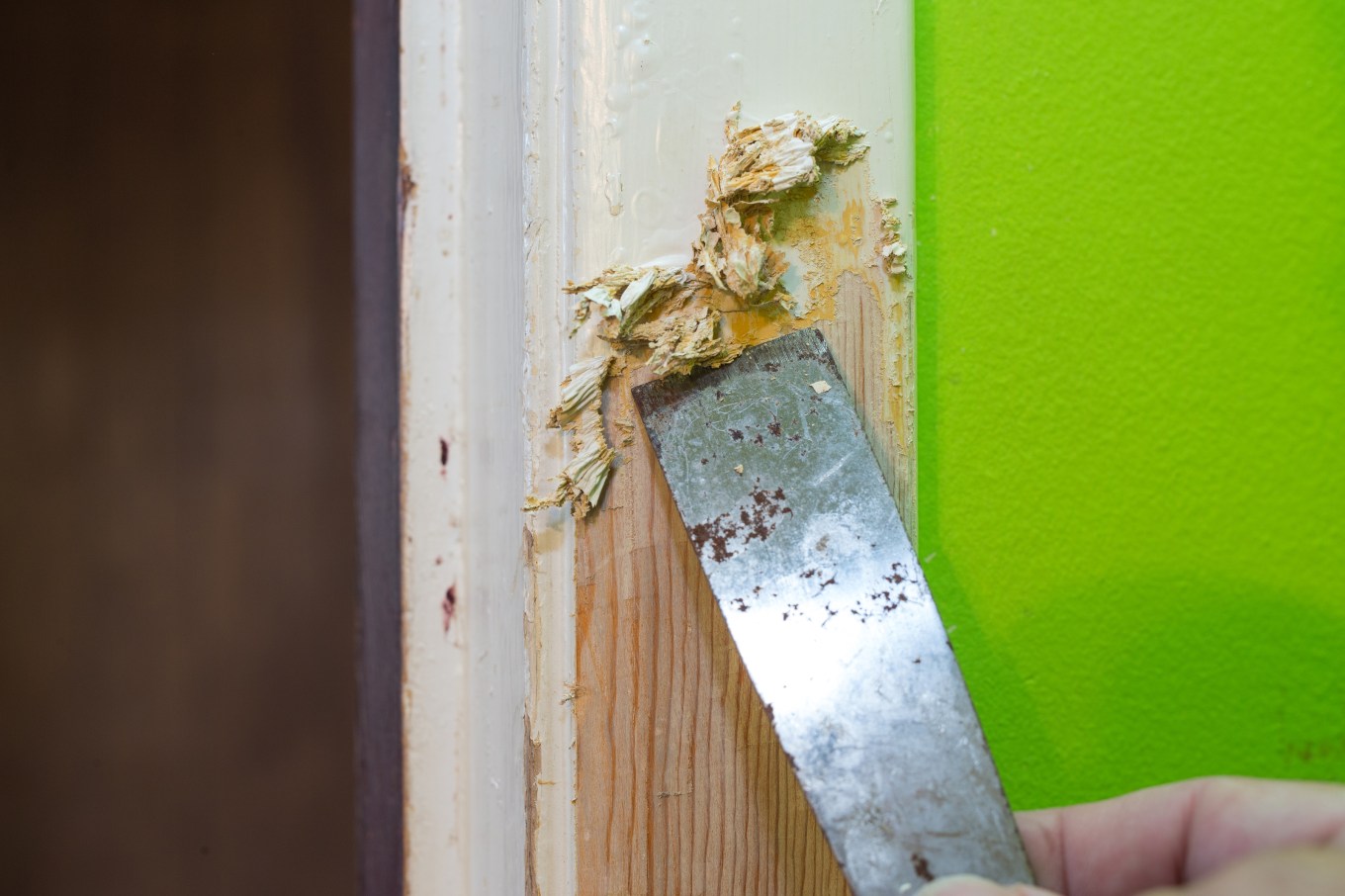
Removing existing paint is often necessary to prepare your home for a fresh coat of paint. But this seemingly simple task may require considerable know-how. Before embarking on a project, consider these tips.
- Consider the surface, the type of paint, and the skill level needed to effectively strip paint for a project.
- Don’t hesitate to contact a professional for tricky surfaces like brick.
- When DIYing, use the proper safety equipment and follow safety best practices.
- Remember that solvents and paint strippers can impact the surface you’re working on. Seek advice from a professional regarding which paint strippers will be most effective for your project.
Whether tackling minor touch-ups or significant remodeling projects for upcoming resale, the proper techniques and tools can help you remove unwanted paint and create the foundation for a fresh paint job and a whole new look.
